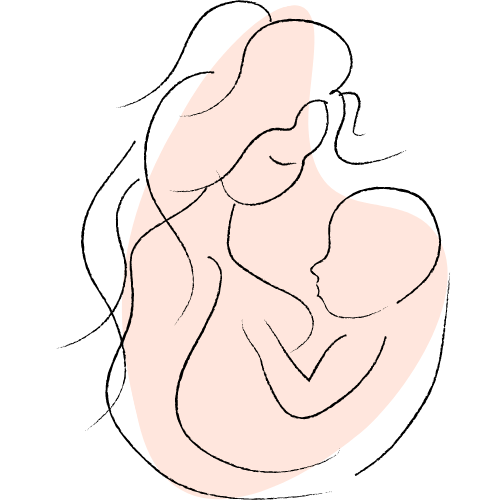Common causes of gas discomfort in breastfed babies:
• Incorrect latch while nursing leads your baby to swallow too much air
• Excessive crying fills your baby’s belly with air
• Constipation
• The immature digestive tract is still learning to process food, gas, and stool effectively
Common symptoms of gas discomfort in breastfed babies:
• Excessive burping can indicate that your baby is swallowing too much air from feeding or crying
• Spitting up (while typically completely normal) can sometimes be a sign of gas build up
• Excessive flatulence (again, usually completely normal and a natural way to relieve the pressure of gas) can indicate your baby’s digestive tract is still maturing.
• Bloating or swollen abdomen can mean that gas is trapped in the intestines
• Trouble sleeping is often a symptom as well as a result of the combined symptoms listed above – a vicious cycle!
What to Do
Apply gentle pressure to your baby’s belly
Tummy Time: This position can put gentle pressure on her belly, helping to push out the trapped gas. Wait at least 30 minutes after a feeding to allow your baby’s belly to settle before starting tummy time. Or try a more advanced move – use both hands and a lot of guided support to lay your baby tummy down on a large beach or exercise ball and gently roll her on the ball in a circular motion.
Forearm Hold: Also called the football hold, magic hold, and the colic carry. Try carrying your baby face down with her body resting on your forearm, the front of her diaper area in your hand with her chin cradled in your elbow. Make sure to tilt her head to the side to avoid blocking her nose or mouth. Carrying your little one in this face-down position will place the same gentle pressure on her belly that is achieved during tummy time.
Burp your baby during and after a feeding
Take a break between sides or every ounce or so while bottle feeding to get a burp or two out. If you have an especially fast let-down while breastfeeding, give her a break a minute or two into the feeding, as she may have swallowed too much air too quickly. You can also let your fast let-down spray into a cloth before latching your baby to help reduce the amount of air she swallows. Some lactation consultants recommend burping your baby every 5-10 minutes during feedings, especially in the first few weeks.
Pediatricians recommend burping your baby while she’s in a seated position, with her head supported by the cradle of your hand. You can also burp your baby in the typical position – upright and over your shoulder. Be patient while burping because it may take some time for the gas bubbles to surface. You can always try laying her down for a moment or two to let the bubbles re-settle and then lifting her up and trying again. If she doesn’t burp after a few minutes, it’s ok to move on.
Feed your baby at an angle
When nursing, hold your baby at more of an angle, making sure that her head and neck are slightly elevated over her tummy. Keeping your baby upright for 30 minutes after a feeding can also help.
Try infant massage on your baby’s tummy to relieve gas pressure
While your baby is laying on her back, gently rub her tummy in a clockwise motion and then pull your hands down the curve of the belly. Massaging in a clockwise direction helps to move gas along as that is the route the intestinal tract follows. Repeat several times to help move trapped gas.
Check in with a lactation consultant
Keep a food journal
While it’s rare for mom’s diet to be the cause of infant gas, if you suspect that your baby may be sensitive to something in your own diet or a new food you are introducing, try tracking your meals for several days along with the gas symptoms your baby is exhibiting to see if any patterns or links emerge. abies are designed to adapt fairly quickly to your—and their—diet, so don’t go overboard trying to pinpoint a dietary cause. You both need a full range of nutrients to support good health and her development.
Wait it out!
For most babies, the number one most effective treatment for gas is time. Remember that babies are likely to be gassy no matter what because their digestive system is still immature. If you cannot find an apparent cause for your baby’s gassiness, she probably just needs a little more time to mature.
Use gas drops like simethicone
Simethicone breaks down bubbles of gas trapped in the stomach and intestines. It is not absorbed by the body and therefore considered quite safe for babies (but still check with your babies doctor first). In clinical trials, simethicone drops were effective in reducing the total amount of gas passed but not more effective than a placebo, when the study focused on baby’s total crying time and the severity of colic-like episodes.
Try shorter and more frequent feedings
If over-supply is an issue for you, try to nurse your baby more frequently for a shorter time. As a rule of thumb, feed your baby twice as often and half as much. Remember: a baby’s tummy is around the size of her fist, so she doesn’t need as much milk as you may think.
Bicycle your baby’s legs
Bicycling your baby’s legs in a circular motion can help to move the intestines and release gas trapped lower in the abdominal tract. With your baby lying on her back, take her legs in your hands and cycle them slowly back and forth as if they were riding on a bike. Take a break every now and then to press both of her knees gently into her own tummy for some extra pressure.
